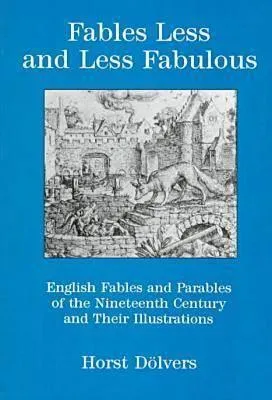Fables Less and Less Fabulous: English Fables and Parables of the Nineteenth Century and Their Illustrations
By (author): "Horst Dolvers"
ISBN0874135842
ISBN139780874135848
AsinFables Less and Less Fabulous: English Fables and Parables of the Nineteenth Century and Their Illustrations
Original titleFables Less and Less Fabulous: English Fables and Parables of the Nineteenth Century and Their Illustrations
This study examines more than one hundred fables in prose and verse, most of them original in content, some highly original in form. Author Horst Dolvers refutes the assumption that the fable declined in popularity after 1800 and the days of La Fontaine, Swift, Gay, and Lessing. Most of the texts studied in this book are taken from Victoria collections and poetry anthologies, and are presumably unknown. An extensive documentation presents verse fables according to the different functions they served - in humor, satire, and education, religious and philosophical speculation, and as drawing-room entertainment full of erotic innuendo. Mere stock-taking is not this book's intent, however. Its second part focuses on three Victorian books, applying semiotics (including theories of discourse). A review essay of Lord Lytton's Fables in Song (1874) by Robert Louis Stevenson contains perceptive remarks on the "post-Darwinian fable," a newly developing variant turning away from "old stories of wise animals or foolish men" to confront "truths that are a matter of bitter concern." Lytton's reveries deserve rediscovery as narratives that skillfully manipulate their readers by a hierachical ordering of discourses - nudging them into ideological positions that, to many readers, must have appeared commonsensical. At the same time, they tend to sap the complacencies of common sense. A picture book by Walter Crane, an Aesop in limericks (1887), shows the illustrator's art as no less Houdinian. Finally, Anna Sewell's children's classic Black Beauty, if simple, should be read as anything but plain; its speaking silences make the reader feel that man and beast are divided rather than united by their ability to communicate. The horses, shown as capable of speaking like humans, do not share man's multiplicity of discourses - nor consequently, the duplicity resulting from their use.
